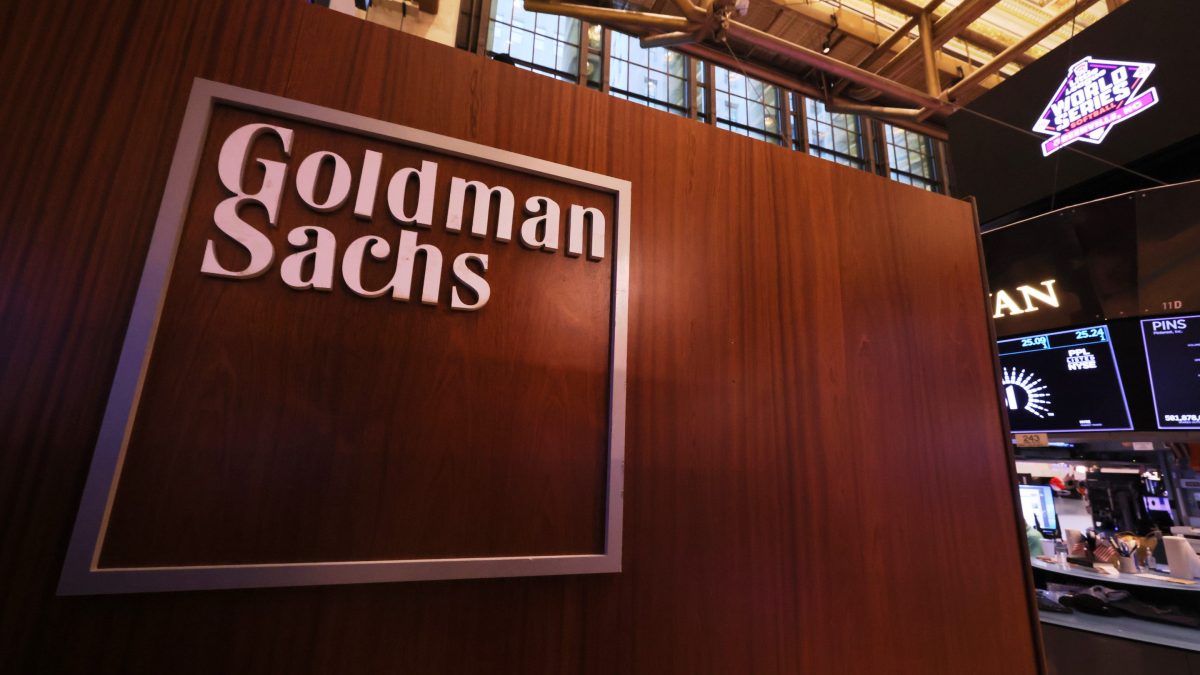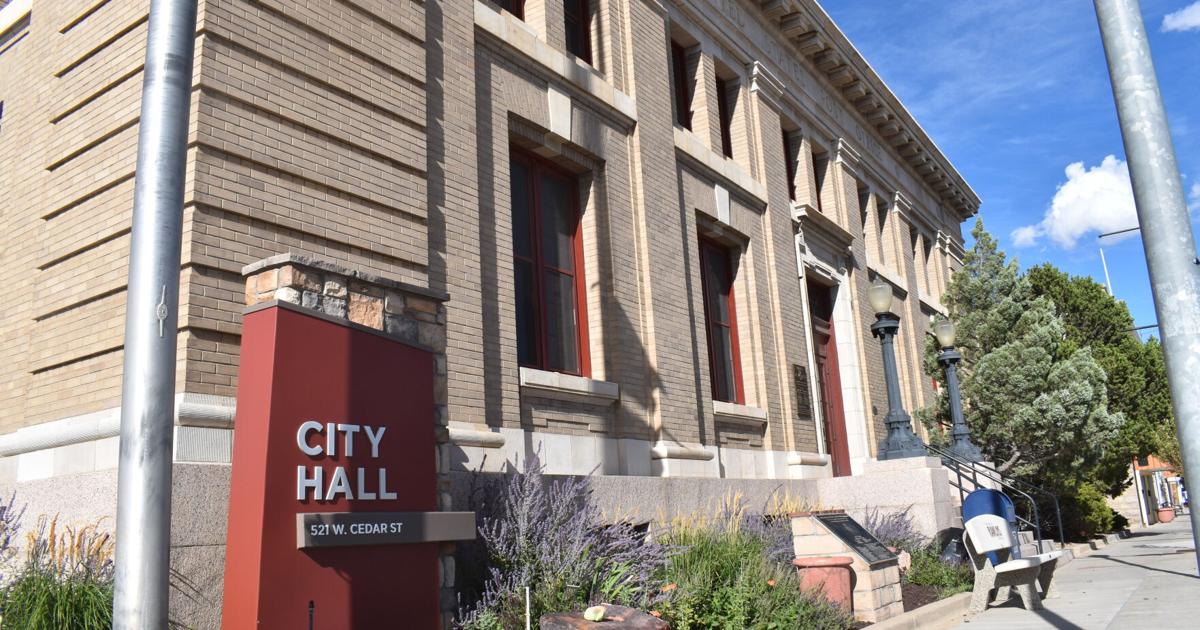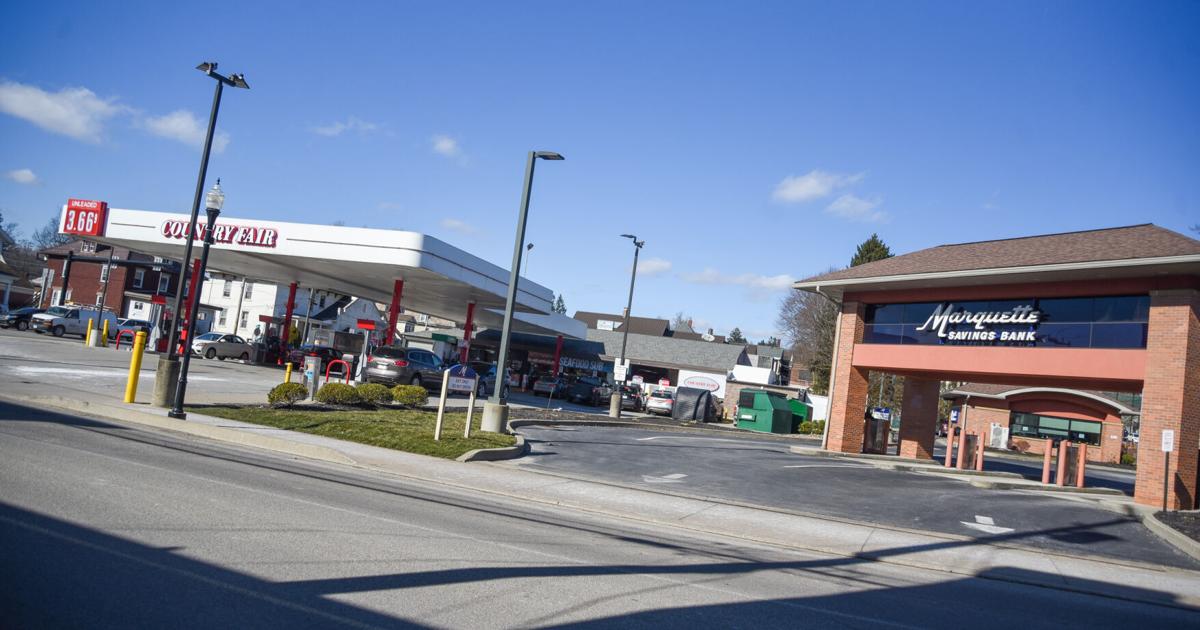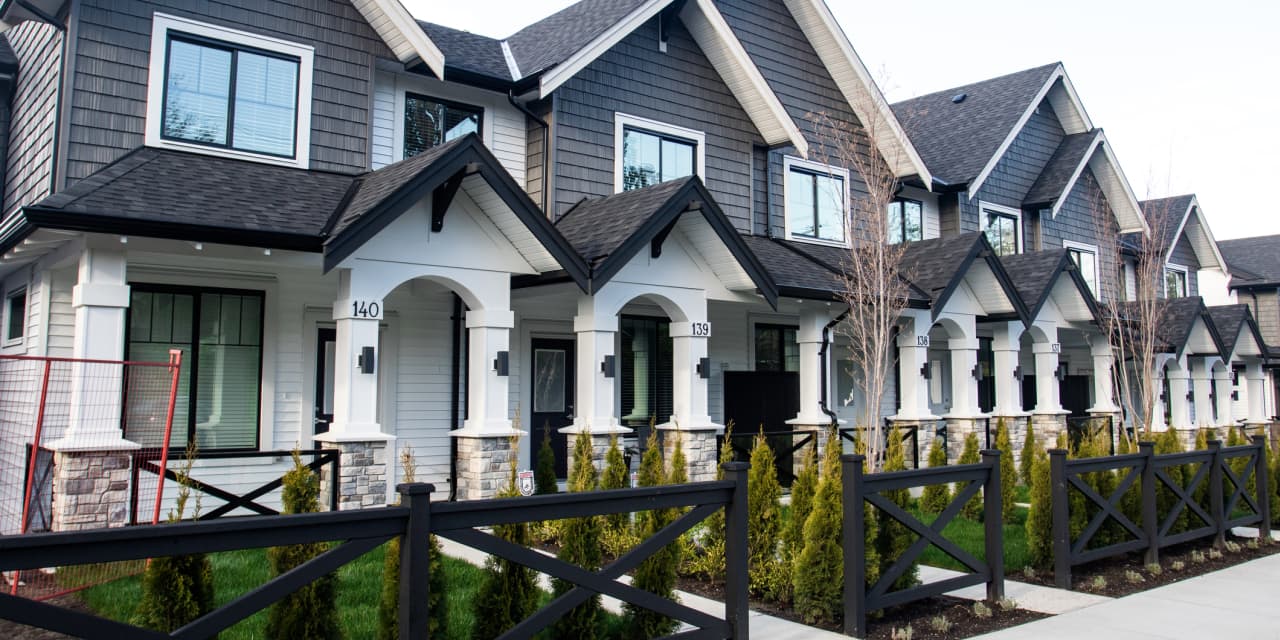The business of banking has become tougher in the last few years. Rising interest rates mean banks have to pay depositors more interest, and many banks have a lot of risky loans on their balance sheets — especially commercial real estate loans.
But big banks have other lines of business that’ve been doing well lately. Like investment banking.
If a corporation wants to raise a bunch of money by selling stock or issuing bonds, it might call up someone like Drew Pascarella, who spent 10 years as an investment banker at Citi, covering the technology, media and telecom sector. He now teaches finance at Cornell University.
He said investment bankers help companies find buyers for those stocks and bonds and help companies purchase other companies or be purchased themselves.
“So there’s lots of different flavors, but an investment bank would help a company think through those merger and acquisition transactions and help them actually effect those transactions in the market,” Pascarella said.
And they charge fees for doing all of that. But until the end of last year, investment bankers’ phones were pretty quiet.
Steve Biggar, a bank analyst at Argus Research, said that last year, corporations were kind of nervous about doing deals. When the economy is uncertain, firms tend to pull back.
“You say, ‘I don’t want to do any expansions, maybe now is not the time, I want to see how everything shakes out in the economy, and are we going to get this soft landing?’ and so forth,” he said.
Companies are also facing higher interest rates and greater regulatory scrutiny. But Christina Sautter, a law professor at Southern Methodist University, said by now, companies have adapted to those challenges.
“Since they’re getting more used to it, they’re more inclined to do deals when they feel like they should or must do deals,” she said.
Monday morning, Goldman Sachs reported that investment-banking revenue was up 32% last quarter compared to the same time a year ago.
Gerard Cassidy, a bank analyst at RBC Capital Markets, said it helps that the economy this year is more certain than it was in 2023.
So corporate dealmakers and investment bankers are likely to stay busy. “More companies are in the pipeline to go public. More mergers and acquisitions are likely to take place this year, which also will drive investment-banking fees,” he said.
Put another way, if investment bankers are getting a lot of calls, Cassidy said, the economy’s probably looking pretty good.
There’s a lot happening in the world. Through it all, Marketplace is here for you.
You rely on Marketplace to break down the world’s events and tell you how it affects you in a fact-based, approachable way. We rely on your financial support to keep making that possible.
Your donation today powers the independent journalism that you rely on. For just $5/month, you can help sustain Marketplace so we can keep reporting on the things that matter to you.
Standard Chartered has made a number of changes to its leadership team.
The British banking giant announced Tuesday (March 11) that it had appointed Roberto Hoornweg, head of financial markets, and Sunil Kaushal, regional CEO for Africa and the Middle East, to serve as co-heads of corporate and investment banking.
They replace Simon Cooper, who had held the job since 2018 and is leaving Standard Chartered to “pursue other interests,” the bank said Tuesday in announcing a broader series of changes to its executive team.
“These changes will ensure we have the strongest possible team in place, with clear accountabilities, to drive our transformation efforts and bring renewed intensity to our focus on increased growth and returns through each of our business lines,” CEO Bill Winters said.
In addition to the investment banking appointments, the company has also given Judy Hsu — its CEO for consumer, private and business banking — responsibility for greater China and the north Asia markets.
Ben Hung, currently the bank’s CEO for Asia, will take on the new role of president, while human resources head Tanuj Kapilashrami, will assume the newly-created position of chief strategy and talented officer, the announcement said.
A report by Reuters notes that sources say the shake-up marks Winters’ last push to revitalize Standard Chartered’s talent amid China’s weak economic outlook. The report also said the moves were a surprise, and that Cooper had been considered a possible successor for the CEO.
The moves follow similar changes made by JPMorgan Chase earlier this year to its leadership and organizational structure.
“The senior management changes and new alignments announced today will help the company serve clients even better as well as further develop the company’s most senior leaders,” the bank said in January.
Among the changes is the combination of JPMorgan’s major wholesale businesses of Global Investment Banking, Commercial Banking, Corporate Banking, and Markets, Securities Services and Global Payments in an expanded Commercial & Investment Bank.
“Combining these efforts will enhance and deepen the way the company can seamlessly deliver the world’s most complete set of wholesale banking products and solutions,” the bank said.
Elsewhere in the banking space, HSBC has begun efforts to hire around 50 more commercial bankers as it steps up lending to tech and healthcare startups.
“There’s this void in the market and we’re jumping into it,” Wyatt Crowell, head of U.S. commercial banking for HSBC, told Reuters. “It’s gone way better than I thought it was going to go, both in terms of the volume of deals and our win rate on the deals.”
Marquette Savings Bank of Erie has announced plans to sell one of its two Meadville banking properties to a neighboring, non-banking business.
The bank intends to sell its drive-thru-only branch property at 349 North St. to Country Fair Inc., the Erie-based convenience store chain. The branch will close down at 6 p.m. March 29.
Country Fair Inc., with 72 convenience stores located in Pennsylvania, Ohio and New York, has two Meadville-area locations.
Country Fair’s locations are at 18163 Conneaut Lake Road in Vernon Township, and 333 North St., the intersection of North and North Main streets, in Meadville. Its North Street location abuts the Marquette’s drive-thru-only office on North Street.
“Country Fair has been exploring the potential for additional parking and storage at its location on North and Main streets,” Steve Danch, chairman of Marquette’s board of trustees, said in a statement.
Country Fair Inc. officials did not return Meadville Tribune emails and telephone messages on Thursday and Friday requesting comment about its plans or a timeline for any changes.
On Jan. 18, the Meadville Zoning Hearing Board did approve a request for a special exception for 349 North St. to serve as additional parking and additional storage space for Country Fair’s North Street location. Approval of the special exception was required for the potential land sale to move forward.
Marquette will maintain its Meadville full-service walk-in and drive-thru location at 1075 Park Ave., Danch said. The two bank branches are about three-quarters of a mile apart.
“With a full-service Marquette branch located nearby on Park Avenue, this sale offers Marquette an opportunity to support and benefit the Meadville community while maintaining a strong presence to serve our customers here,” Danch said.
No banking jobs will be lost as the North Street employees may transfer to other Marquette locations in the Meadville area, Danch said.
In addition to Park Avenue, the bank has another full-service office in the Meadville area at 16272 Conneaut Lake Road in Vernon Township.
The numbers: Home prices in the 20 biggest U.S. metros rose for the 11th month in a row and hit a record high amid a persistent shortage of resale homes for sale.
The S&P CoreLogic Case-Shiller 20-city house price index rose 0.2% in December compared to the previous month.
Home prices in the 20 major U.S. metro markets were up 6.1% in the last 12 months ending in December.
A broader measure of home prices, the national index, rose 0.2% in December and was also up 5.5% over the past year. All numbers are seasonally adjusted.
The 20-city and the national index are at an all-time high.
Key details: San Diego posted the biggest year-over-year home-price gains in December. Prices were up 8.8%.
All 20 major markets reported yearly gains for the first time in 2023, S&P said.
Home prices rose the slowest in Portland, increasing by 0.3%.
| Cities | Change from last year |
| Atlanta | 6.3% |
| Boston | 7.2% |
| Charlotte | 8% |
| Chicago | 8.1% |
| Cleveland | 7.4% |
| Dallas | 2.1% |
| Denver | 2.3% |
| Detroit | 8.3% |
| Las Vegas | 4.2% |
| Los Angeles | 8.3% |
| Miami | 7.8% |
| Minneapolis | 2.9% |
| New York | 7.6% |
| Phoenix | 3.8% |
| Portland | 0.3% |
| San Diego | 8.8% |
| San Francisco | 3.2% |
| Seattle | 3% |
| Tampa | 4.1% |
| Washington | 5.1% |
| Composite-20 | 6.1% |
A separate report from the Federal Housing Finance Agency also showed home prices rose 0.1% in December from the last month, and were up 6.6% in the past year.
The FHA also noted that the housing market has experienced annual home price growth every quarter since the start of 2012.
The median price of a resale home was $382,600 in December 2023, and a newly built home was $413,200.
Big picture: Even though rates went to 8% in 2023 and dried up demand, that did not push down home prices significantly, per the Case-Shiller index. However early analysis of the data indicates that some markets are seeing home price declines.
But with the 30-year dropping below 7% in December, home prices may see a boost as demand picks up. And with a persistent and severe shortage of homes for sale, home prices could be pressured upwards again.
What S&P said: “Looking back at the year, 2023 appears to have exceeded average annual home price gains over the past 35 years,” Brian D. Luke, head of commodities, real & digital assets at S&P Dow Jones Indices, said in a statement.
“While we are not experiencing the double-digit gains seen in the previous two years, above-trend growth should be well received considering the rising costs of financing home mortgages,” he added.
And the company said it was able to see the early impact of higher rates on home prices. “Increased financing costs appeared to precipitate home price declines in the fourth quarter, as 15 markets saw lower values compared to September,” Luke noted.
HSBC’s global banking and markets unit jumped 8% last year as the UK lender increased fees from dealmaking and maintained trading revenue in most asset classes.
The UK lender posted revenue of $16.1bn for its global banking and markets unit last year, according to its annual accounts. Fees from capital markets and M&A work surged 36%, with HSBC’s investment bank benefiting from a resurgence in debt underwriting revenue.
HSBC’s pre-tax profit of $30.3bn for 2023 was a record for the bank and an increase of 78%, but still below the $34bn expected by analysts. In a statement, chief executive Noel Quinn said that the results “reflected four years of hard work and the strength of our balance sheet in a higher interest rate environment.”
HSBC finished 16th in the investment banking fee league tables last year, according to data provider Dealogic, with 1.3% share of the market. This is up from 17th a year earlier.
The UK lender’s markets and securities services business posted revenue of $9bn, which was largely in line with 2022. However, equity trading fees of $552m were nearly half of the $1bn it earned in the unit in 2022.
HSBC’s GBM business dipped 4% in the final quarter of the year to $3.7bn.
READ HSBC hikes bonuses to $771,700 for its top investment bankers
HSBC has bolstered its UK investment bank over the past year, hiring two senior dealmakers for corporate broking in July, but faces stiff competition from Barclays, which is aiming to consolidate its first place finish in the UK dealmaking fee league tables last year. In recent months, hires within its investment bank have focused on its core markets of China and the Middle East.
Investment banks have struggled against an ongoing drought in deals, with Wall Street banks and Europeans alike posting sharp declines in M&A fees in 2023. UK rival Barclays unveiled a 12% decline in investment banking fees for 2023, led by a 23% slump in revenue from M&A work.
Barclays also unveiled its first investor day since 2014, separating its business into five key units including separating its investment bank from its corporate bank. While the UK lender will look to reduce its reliance on its investment bank, it is not pulling back and within its dealmaking team intends to shift the balance away from debt underwriting to do more M&A and equity capital markets work.
Deutsche Bank’s origination and advisory business was up by 25% in 2023, buoyed by a rebound in debt capital markets activity as its M&A unit slipped 25%. A hiring spree of 50 managing directors at the German lender last year aims to shift the balance of its investment bank towards more M&A and equity capital markets work.
To contact the author of this story with feedback or news, email Paul Clarke
The biggest Wall Street banks cut 30,000 jobs last year, kicked off by Goldman Sachs who informed its staff of plans to make its deepest reductions since the 2008 financial crisis shortly after Christmas 2022.
Goldman’s 3,200 job cuts were swiftly followed by 3,500 at Morgan Stanley, and then 5,000 at Citigroup. Bank of America refrained from deep redundancies, but 4,000 employees departed regardless through its ‘natural attrition’ approach last year.
With the exception of Credit Suisse, which started cutting thousands of roles before being acquired by its biggest rival UBS in March, European banks refrained from deep redundancies last year.
Times have changed.
Whether it’s an attempt to revive a flagging share price, free up funds for buybacks, the march of technology, strategic overhauls or simply reining in costs, top European banks are cutting jobs and reducing bonuses for those that remain.
READ ‘Doughnuts’ loom: Bankers brace for brutal bonus season
“It’s a balancing act for a lot of European banks, particularly after two years of poor performance for investment banking. There’s only so long you can keep paying expensive talent in the hope that revenue will recover,” said Gary Greenwood, a bank analyst at Shore Capital.
Barclays is expected to unveil a strategic overhaul alongside its annual results on 20 February, with the UK lender looking to save £1.25bn in costs. So far, job cuts have mainly hit support functions. Deutsche Bank said that 3,500 jobs will go over the next year, largely in back office functions, as it looks to save €2.5bn after headcount swelled 6% in 2023.
Societe Generale is cutting 900 jobs within its Paris headquarters as part of new CEO Slawomir Krupa’s plans to pull back on costs, while UBS has earmarked around $6.5bn in employee expenses to be stripped out as it integrates Credit Suisse.
On a smaller scale, Rothschild cut around 10 investment banking jobs in January, with former Goldman dealmaker John Brennan departing.
“The US banks are much more reactive in terms of cutting headcount than their European counterparts,” said Stephane Rambosson, co-founder of headhunters Vici Advisory. “European banks are now focused on costs, but each case is specific to their circumstances rather than market conditions. Wall Street banks are also quicker to hire again when the tide turns.”
As well as job cuts, bankers are enduring another brutal bonus round. There is widespread disgruntlement at UBS as the bank spread an already small pool around its existing employees, the influx of Credit Suisse staff and a flurry of senior Barclays dealmakers brought in last year on guarantees, according to bankers.
Barclays has handed zero bonuses to up to a third of dealmakers in some units, bankers told Financial News, with Bloomberg previously reporting that “dozens” of employees were set for doughnuts this year. Deutsche Bank, which also has to digest an expensive hiring spree and its £410m acquisition of City broker Numis, is also set to reduce bonus payments.
READ Investment banks face talent crunch even after deep job cuts
“We have observed a similar, but even more aggressive, trend with the European banks regarding layoffs and bonus pool reductions,” said Chris Connors of Wall Street compensation consultants Johnson Associates. “The European banks have struggled to keep pace with their American counterparts on business results and compensation. From the employee perspective, we anticipate European bankers to be similarly disappointed to US bankers given the muted results in advisory and other units such as underwriting, which are still well below 2021 levels.”
While US banks cut dozens of dealmakers last year, some European players took advantage of the dislocation. Deutsche hired 50 senior bankers, while Santander picked up dealmakers from both the fallout from Credit Suisse’s takeover and from Goldman Sachs and Morgan Stanley.
Most cuts so far at European banks have focused on management or back office functions, and there’s little suggestion that deep investment banker redundancies are on the cards, particularly as banks prepare for a revival in dealmaking activity after a near two-year lull. However, headhunters told FN that many banks were taking a much more cautious approach about bringing in senior talent.
During its fourth quarter earnings call, Deutsche Bank chief executive, Christian Sewing said that the bank had “positioned ourselves for a recovery in origination and advisory” after its hiring spree. “Now, this is where we see considerable growth potential,” he added.
“Investment banking is a people business, so banks will be reluctant to let too much talent depart,” added Greenwood. “This could change — a recovery is possible, but there are still a lot of risks in the market.”
To contact the author of this story with feedback or news, email Paul Clarke
A pair of large investment companies with nearly $7 trillion in assets, said Thursday they exited a climate change investor initiative that aims to pressure companies to quickly cut carbon emissions.
JPMorgan Asset Management, which manages $3.1 trillion in assets, has not renewed its membership in Climate Action 100+, saying through a spokesperson that it will oversee its stewardship on climate change with companies with its bank staff.
A second large asset manager, State Street Global Advisors, with $3.7 trillion, also dropped out, saying Climate Action’s approach “will not be consistent with our independent approach to proxy voting and portfolio company engagement,” according to a statement.
BlackRock, the world’s biggest asset manager, is also scaling back its work with the group, a spokesperson confirmed.
Launched in 2017, Climate Action 100+ aims to work with companies to halve their greenhouse gas emissions by 2030, through governance reforms, the elimination of emission through the value chain and enhanced disclosure. Its website boasts $68 trillion in assets under management.
Advertisement – Scroll to Continue
The moves come as Republican officials in Washington and some state governments criticize financial companies for prioritizing climate change, in some cases blocking the firms from state contracts.
Texas Attorney General Ken Paxton applauded the news, saying financial companies had undertaken an “unlawful” campaign to force environmental, social and corporate governance on customers.
“I’m pleased JPMorgan has exited the Climate Action 100+,” Paxton said on X, the former Twitter. “This is a critical step toward putting customers’ financial well-being first.”
Advertisement – Scroll to Continue
JPMorgan said in light of its 40 “dedicated sustainable investing professionals” and other staff, the asset manager “has determined that it will no longer participate in Climate Action 100+ engagements,” according to a company statement.
“We believe that climate change continues to present material economic risks and opportunities to our clients, and our analysts will continue to factor this into engagement with companies around the world.”
jmb/bfm
Financial services firms have been cutting jobs for the past year, with no signs of letting up.
Banks, asset managers and consultancies have all cut swathes of jobs in recent months.
City jobs dried up in the last quarter of 2023, with the number of available financial services roles falling 42% compared with the fourth quarter of 2022, according to Morgan McKinley’s London Employment Monitor.
During the post-pandemic deal boom many major finance firms went on hiring sprees, which left them overstaffed, and a slower job market has meant that fewer of those staff moved on.
READ Bankers, lawyers and accountants won’t quit, stoking fears of more job cuts
Morgan Stanley and PwC both pointed to lower staff attrition rates as part of their motivation for cutting jobs.
Banks have been characteristically brutal in their job cuts, and major disruption such as the merger of UBS with Credit Suisse and Citigroup’s radical overhaul are set to lead to thousands of roles going.
In recent months banks have been followed by asset managers, which are shedding jobs in a tough climate for active fund houses too.
Consultancy and accountancy firms have also cut thousands of jobs as demand for deal advice dries up in a slower market.
These are the banks, consultancy firms and asset managers cutting jobs:
Banks
UBS expects half of planned $13bn cost-cuts to come from employees
UBS rolls out fresh layoffs as Credit Suisse integration continues
Citigroup to cut 20,000 roles in Jane Fraser’s radical overhaul
Citigroup offers generous redundancy package to laid-off UK bankers
Barclays cut 5,000 jobs last year in cost-reduction push
Deutsche Bank to cut 3,500 more jobs in cost-cutting push
Nomura cuts 60 investment bank jobs in difficult dealmaking conditions
Societe Generale to axe 900 jobs in France
Rothschild-owned Redburn Atlantic cuts 20 staff amid UK equity drought
Asset managers
BlackRock to cull 600 jobs as it eyes ‘opportunities for growth’
Abrdn outflows top £12bn as group prepares to cut 500 jobs
Baillie Gifford to cut jobs after fixed income overhaul
Consultancy
EY launches fresh round of UK job cuts
EY is laying off US partners amid tough economic conditions
Deloitte UK to axe 100 jobs amid slow deals market
To contact the author of this story with feedback or news, email James Booth
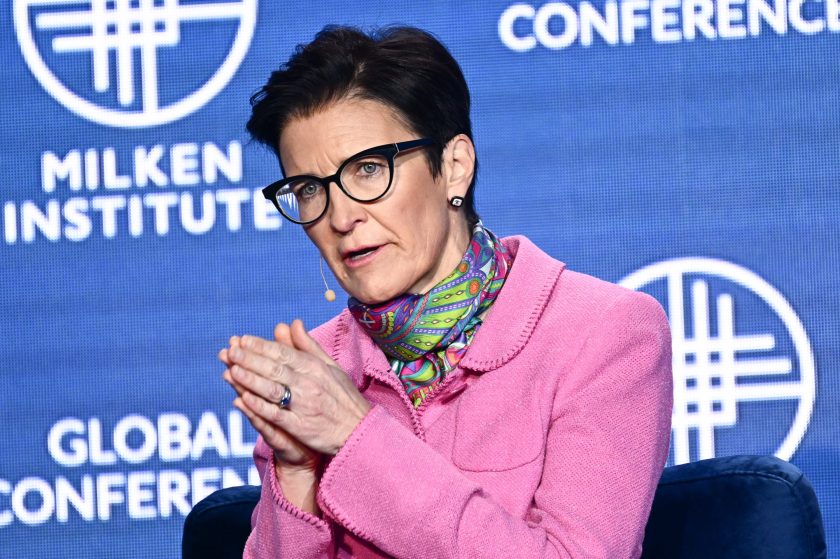
Jane Fraser, CEO of Citi. PATRICK T. FALLON/AFP via Getty Images
Citigroup Inc. dealmakers were told to be disciplined when consuming alcohol at client events after the bank received complaints of unruly behavior, according to people with knowledge of the matter.
In calls late this week, bankers at all levels — from analysts to managing directors — were reminded to keep the firm’s reputation in mind when drinking, said the people, who asked not to be identified discussing confidential information. The senior bankers leading the calls didn’t put a complete curb on consumption of alcohol, noting that drinking in business settings has wide cultural acceptance, the people said.
A representative for New York-based Citigroup declined to comment.
The stern words to Citigroup’s investment bankers come as Chief Executive Officer Jane Fraser is working to raise standards across the Wall Street giant after years of underperformance relative to peers. Citigroup’s management is cutting 20,000 roles, but has so far left investment banking less affected than other divisions.
Read More: Citi to Cut 20,000 Roles in Fraser’s Bid to Boost Returns
The bank last month reported that investment-banking revenue climbed 27% in the fourth quarter from a year earlier. Still, the division had a $322 million loss, largely the result of expenses surging 37%.

